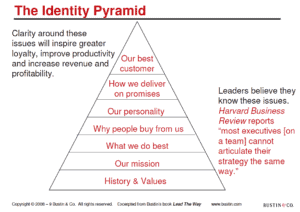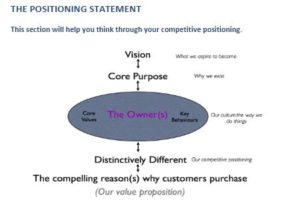The impacts of covid-19 will stay with us for the rest of our lives.
We’ve seen new businesses birthed with success and others thriving amid chaos. We’ve seen neighbourhood classics tragically lost, and others that struggle to survive day-to-day.
Critical points like these thrust every business owner from acting with strategic intention to reacting to curveballs. As we are coming to the end of 2022, most businesses are settling into one of three camps:
- Thriving, but not trusting the success
- Reviving but hesitant to make bold moves
- Surviving and feeling battered, bruised and disillusioned
No matter which category you fall into, you likely are eyeing the rest of 2022 with caution. You’re optimistic but timid in your approach to making those big visionary goals you’ve made in the past. You may even find it hard to dream of a better future because it feels so out of touch with what is happening globally. You are not alone in those feelings.
Now is the opportunity to rewrite the rules and stop settling for less in your business. It is the opportunity to cast a strategic vision that is different from the past and to create more success and growth in your business and your life. Here are some ways you can make it happen.
1. Accept that change is necessary
Change is difficult, but it is for-ever ongoing for small-business owners. And change is happening at a frightening pace.
You’ve likely noticed that the old reliable ways of getting clients and serving them are faltering. The to-do list of things that need your attention is never ending. It’s time to put them to bed.
If change is already happening in your business, why not get ahead of it? When you are reacting to these changes, you treat the symptoms. The better approach is to embrace change to treat the problem.
By treating the problem, you employ change to work with you, not against you. People are likely to welcome strategic change now—especially if the change makes their lives better too.
One way to bring agility and innovation into your business is to implement a quarterly strategic planning and review process into your business. This planning keeps your efforts focused, actionable and accountable while remaining agile and able to shift as new learnings come to the table.
As part of the process, ask yourself these questions.
- What would disrupt your business enough to change everything?
- How can you be on the leading edge of that change?
- How can the business be relevant and profitable five or even 10 years from now?
2. What does the customer really want / need?
The old rules of supply and demand have gone. Through issues with manufacturing and distribution, product-based businesses feel the pinch. Changing client needs and social distancing have left recession-proof businesses struggling. Service-based businesses are finding that their services are no longer crucial or needed. No business or business model has been unaffected.
The reason is simple: The customers’ needs and their problems are in a constant state of change.
Engaging in a conversation with your clients to identify opportunities is a perfect strategy moving forward. The strategy could be as simple as asking a probing question at the end of every client interaction. It could also be more involved such as surveys or quarterly client advisory groups, to follow a more formal process.
More than ever, staying in tune with the customers’ needs and the problems you can solve is imperative. It is the gateway for future growth and innovation.
3. Work smarter, not harder
Australian culture is all about hard work. If you have struggled to achieve your goals, you’ve likely heard someone telling you to work harder.
Since the rise of intellectual capital as a commodity in the 1980s, the ability to be successful is less about our ability to work hard. Many business owners have told me how hard they work only to find success seemingly out of their reach. Evidence that success is not about hard work.
Sure, success demands focus, determination and resilience. But I challenge the notion that hard work is one of the requirements. If it were, we would have more success stories to celebrate.
Working smarter is about leveraging the talents of people and collaboration. When you remove hurdles and bottlenecks in your processes, you promote ease. It’s the processes that are often the problem. That which is easy gets accomplished. That means being able to produce more revenue with the resources you have. You likely will see a boost to team morale and stop spending time putting out fires.
It leverages technology and systems to streamline the business, allowing it to run smoothly. According to Gartner Research, by 2024, organizations will lower operational costs by 30% by combining hyper automation technologies with redesigned operational processes.
Consider which elements of your client experience and service could be delivered through automation, saving critical points for human interaction and forward looking strategies for your business. The organisational efficiencies gained can offset growth investments and produce a more efficient team.
4. Profit is the aim, not a reward
One of the most misleading entrepreneurial and inspirational quotes is: “Follow your passion and the money will follow.” If only things were that simple.
If success is a reward of hard work, this quote puts profit on the same unattainable pedestal. Passion for what you do gives you fire in your belly and can bring a sense of contribution. At the end of the day, though, passion doesn’t pay the bills; prolific profit does.
By shifting your mindset around profit and other metrics in your business, a magical change in how you spend your day occurs. You start focusing on initiatives that produce results and impact your bottom line.
A 2018 Cone/Porter Novelli Purpose study found that “78% of Americans believe companies must do more than just make money; they must positively impact society as well.” This marriage of purpose and profit is an instance where everyone wins. Clients love supporting social impact; businesses can be profitable and improve their community and world in the process.
For many of my clients, bringing profit up on the priority list, even with reduced revenue, is the defining element of rebuilding business stability.
5. Be a confident leader who empowers others
The entrepreneurial trials of the economic crisis have shaken the confidence of even the most experienced entrepreneurs. We are questioning everything in our professional and personal lives. Whispered conversations with other entrepreneurs over the year let us know that we are not alone in that journey.
With this period of reassessment, the future feels less certain. That uncertainty erodes our confidence to take risks and make bold moves. Past success, “knowing” and being right are pillars in the old definition of confidence.
Be careful—that shaken faith also seeps into our teams’ bones. They want something to champion.
There is good news that can breathe new life into your confidence. You do not need all the answers. You do not even need to know the “how” beyond “what is the best next step?” And, you don’t even need to be right.
Empowering others is what defines the success of top leaders. What got you here has centered around who you are and what you can accomplish. Those accomplishments won’t fuel the future. Relying on your efforts alone is a limiter when scaling your business — even in strong economic times. The old definition of confidence was about what you could do. Your future confidence needs to be about your team and the belief in what the team can do.
For 2023 to be the beginning of your comeback story, you need to take action differently enough to move the needle in your business. Make bold moves that advance and protect your business. Marry your vision to these tips, and you could be looking at a successful year.
Peter O’Sullivan, The CFO Centre










